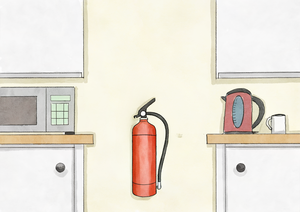
7.4 How to manage a crisis?
When supporting people with schizophrenia and substance use disorders, particularly during crises like psychosis, depression, or violent behavior, it is essential to act in a calm and informed manner.

7.4 How to manage a crisis?
When supporting people with schizophrenia and substance use disorders, particularly during crises like psychosis, depression, or violent behavior, it is essential to act in a calm and informed manner.
Here are key steps to take, considering both the mental health condition and substance misuse.
Dealing with psychosis
In moments of psychosis, adopting a CALM, NON-CONFRONTATIONAL APPROACH may help deescalate the situation.
It could be beneficial to avoid contradicting or arguing against the person’s delusions, as this could increase distress.
Instead, listening empathetically and acknowledging their feelings, without confirming false beliefs, might create a sense of safety.
For example, a gentle statement like,
“It sounds like this is really frightening for you…”
might offer support without intensifying confusion.
Maintaining safety can be important, especially if the person seems to pose a risk to themselves or others.
Ensuring the environment is quiet and reducing external stimulation may prevent escalation while waiting for professional help.
Dealing with violence
In situations involving potential violence, PERSONAL SAFETY IS ALWAYS A PRIORITY.
It can be helpful to maintain a safe distance, particularly if there is any risk of harm.
Removing dangerous objects from the vicinity and avoiding any form of confrontation or aggression may reduce the likelihood of an outburst.
If the situation remains volatile, contacting trained professionals – such as emergency services – could help the person receiving appropriate care.
Dealing with depression
For someone experiencing depression, simply OFFERING AN EMPATHETIC, NON-JUDGMENTAL SPACE to express their feelings might help them feel heard.
Acknowledging their distress with phrases like,
“I hear that you’re going through a tough time…”
can convey support.
If the depression seems severe or there are signs of suicidal thoughts, gently encouraging them to connect with a mental health professional could be life-saving.
By focusing on calm communication, safety, and accessing professional help, you can make a positive difference in these challenging situations.
If you are unsure how to proceed, it’s always advisable to contact mental health professionals or crisis helplines for immediate guidance.